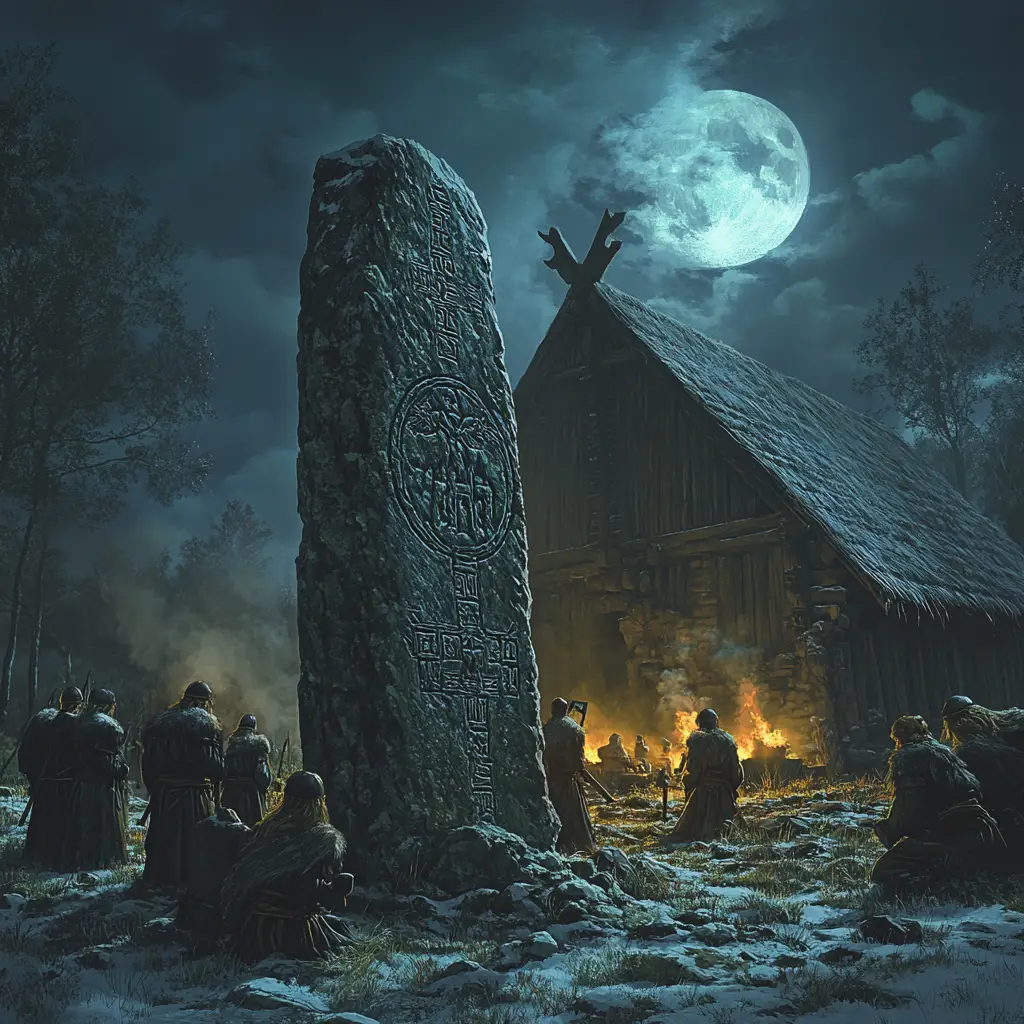Denmark’s Viking-Age Monuments
The Jelling Stones are two massive runestones located in Jelling, Denmark. These stones, erected in the 10th century, are among the most important Viking monuments and are often referred to as “Denmark’s birth certificate” because they mark the country’s transition to Christianity.
The Smaller Jelling Stone (Gorm’s Stone) – Pagan Tribute
Erected by King Gorm the Old (c. 940 AD) in honour of his wife, Queen Thyra.
Features runic inscriptions in Old Norse, calling Gorm the “king of the Danes”, making it the first recorded mention of Denmark.
A traditional Viking Age runestone, reflecting the old Norse pagan beliefs.
The Larger Jelling Stone (Harald Bluetooth’s Stone) – Christianization of Denmark
Erected by King Harald Bluetooth (c. 965 AD) to honour his parents and to proclaim that he unified Denmark and converted the Danes to Christianity.
Features both runic inscriptions and a carved figure of Christ, blending Viking traditions with Christian influence.
Marks the shift from Norse paganism to Christianity, showing Denmark’s changing culture in the late Viking Age.
Significance of the Jelling Stones
UNESCO World Heritage Site: Recognized for their historical and cultural importance.
Symbol of Danish Identity: The stones are key artifacts in Denmark’s history, and the Harald Bluetooth inscription is often seen as the nation’s founding declaration.
Connection to Viking Power & Christianity: The carvings show a unique blend of Viking warrior culture and the spread of Christianity in Scandinavia.



